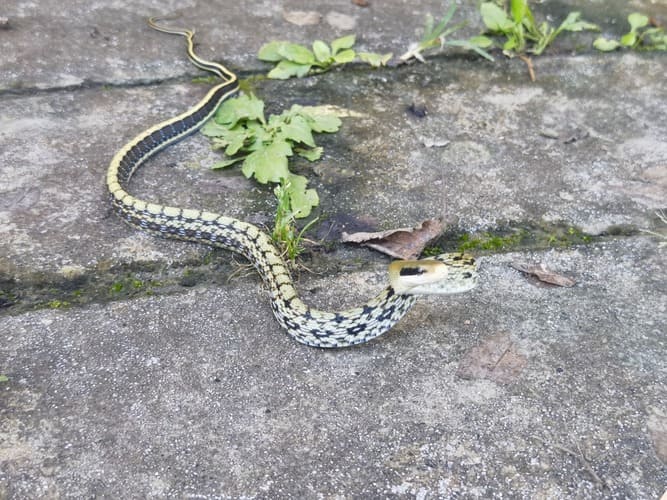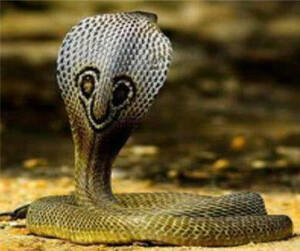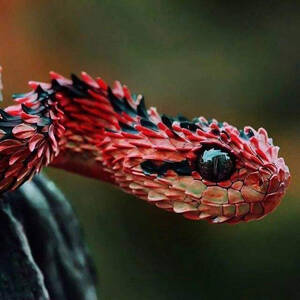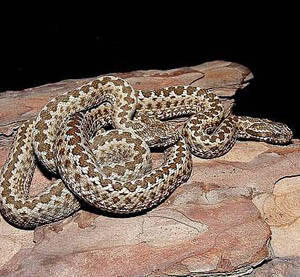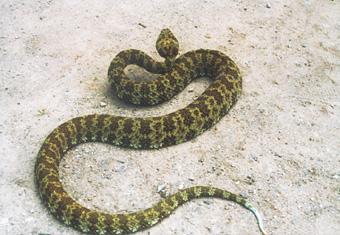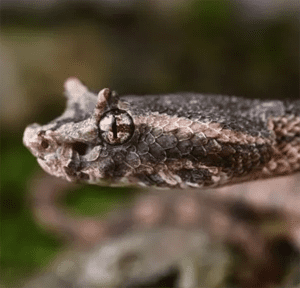Hydrophis melanocephalus
IUCN
LCBasic Information
Scientific classification
- name:Hydrophis melanocephalus
- Scientific Name:Hydrophis melanocephalus,Black-headed sea snake
- Outline:Squamata
- Family:Elapidae S.snake
Vital signs
- length:81-150cm
- Weight:No verification information
- lifetime:About 20 years
Feature
The back of the head has yellowish-white spots, the back of the body is olive or gray, and the abdomen is yellowish-white with black rings.
Distribution and Habitat
It is distributed along the coasts of Zhejiang, Fujian, Taiwan, and Guangdong in China; it is distributed along the coast of Japan abroad.
It lives in reef waters within about 50m from the coast. It is ovoviviparous. It is reported that among the 15 specimens caught in Anping Port, Taiwan Province in August, 9 were pregnant, and 3 were dissected, with a total of 14 well-developed embryos. In the waters of Taiwan, its reproductive period is from August to September. It preys on small eels.
Appearance
The head is small; the front part of the body is slender and cylindrical, and the back part is thicker and laterally flattened. The eyes are larger than the preorbital scales; the front temporal scales are usually single and larger; there is a row of small scales on the lip after the 2nd or 3rd scales of the lower lip. The dorsal scales are smooth, arranged in a shingle-like manner, with 33-41 rows in the middle section and ridged; the ventral scales often have two small tubercles. The back of the head is black, with yellow stripes on the frontal scales; the back of the body is olive or light gray; the abdomen is light yellow with black stripes, which meet at the front of the body and the midline of the abdomen to form a ring. The total length is 810-1500mm.
Details
The black-headed sea snake is mainly Hydrophis melanocephalus, an animal of the genus Hydrophis in the family Elapidae.
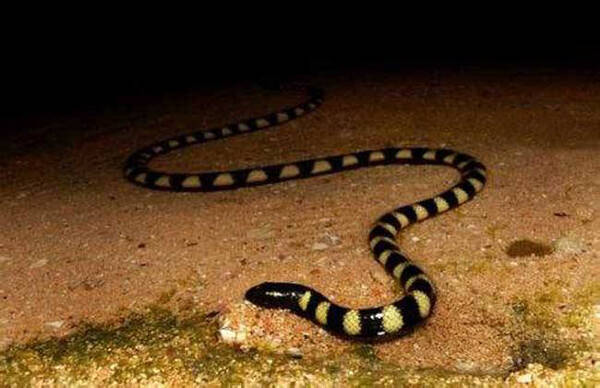
The black-headed sea snake mainly lives in tropical to subtropical waters. It is a completely aquatic snake and has difficulty moving on land. They are mostly seen during the day and mainly prey on fish. In terms of reproduction, black-headed sea snakes are ovoviviparous snakes. Female snakes give birth in October every year, and can give birth to about four to five young snakes each time.
Although most sea snakes do not have the tendency to actively attack humans, black-headed sea snakes are relatively aggressive members, and when they encounter humans, they will not adopt a purely passive attitude of avoidance. Every year in the Okinawa Islands, there are several cases of black-headed sea snakes biting humans to death, so you must be cautious when encountering wild black-headed sea snakes.
The venom of black-headed sea snakes is mainly composed of neurotoxins. After being poisoned, humans will experience symptoms such as general fatigue, muscle tingling, impaired mobility, difficulty breathing, paralysis, etc., and in the worst case, death may occur. If a limb is bitten by a black-headed sea snake, the limb near the heart should be tied up immediately to slow down the flow of venom in the blood, and the venom should be extracted as much as possible. At the same time, seek medical treatment as soon as possible for appropriate treatment.
Black-headed sea snakes like to live in the bottom of the sea near the sea, are phototactic, and are venomous snakes of the front grooved fangs. There is a longitudinal groove on the edge of the grooved fangs, and the venom secreted by the venom glands can be injected into the prey through the heteroducts along the longitudinal grooves of the grooved fangs. Sea snake toxins are neurotoxins that mainly damage the striated muscles of the attacked person, causing muscle paralysis and myoglobinuria, so they are also called muscle toxins. The adult black-headed snake can be more than 1 meter long. It often follows the school of fish to prey on fish in a surprise attack. It is ovoviviparous.
Listed in the "National List of Terrestrial Wildlife with Important Economic and Scientific Research Value" issued by the State Forestry Administration of China on August 1, 2000.
Listed in the second level of the "National List of Key Protected Wildlife in China".
Protect wild animals and eliminate game.
Maintaining ecological balance is everyone's responsibility!

